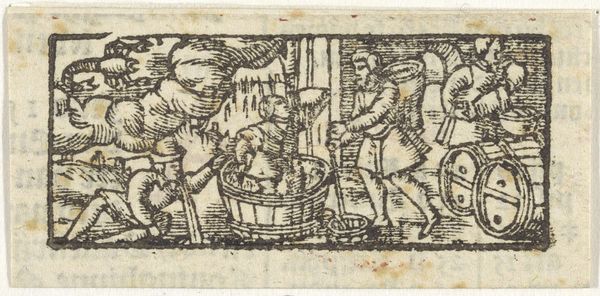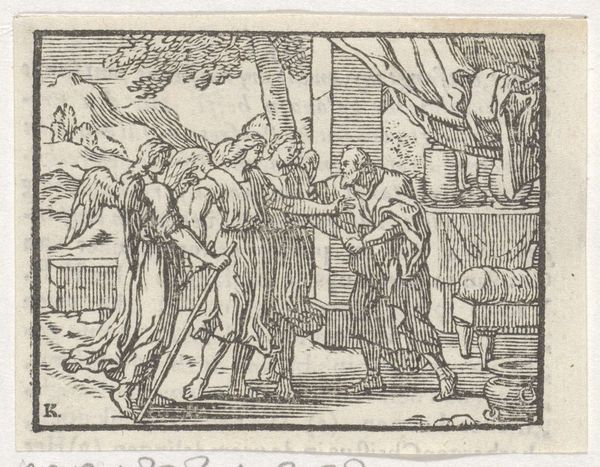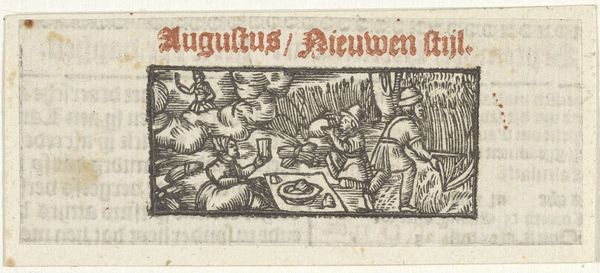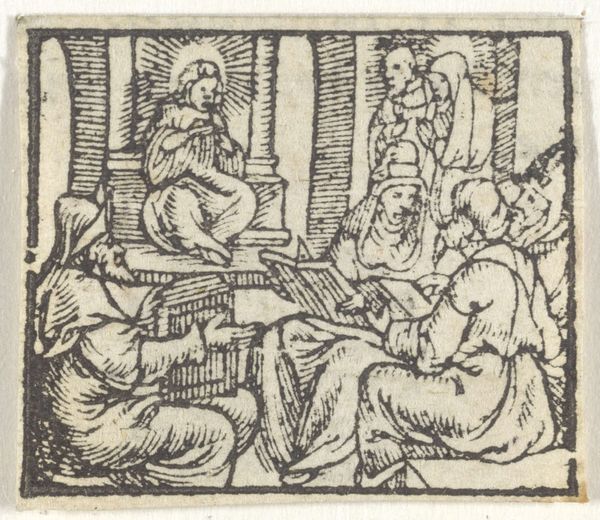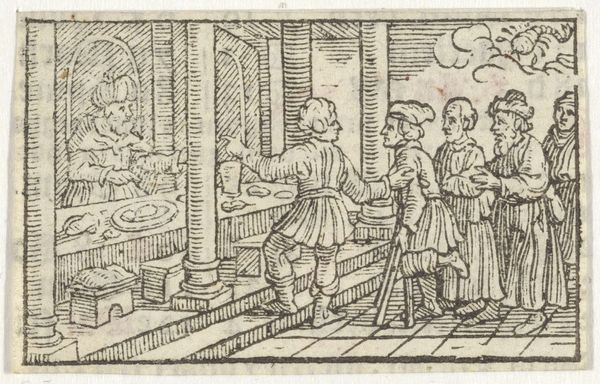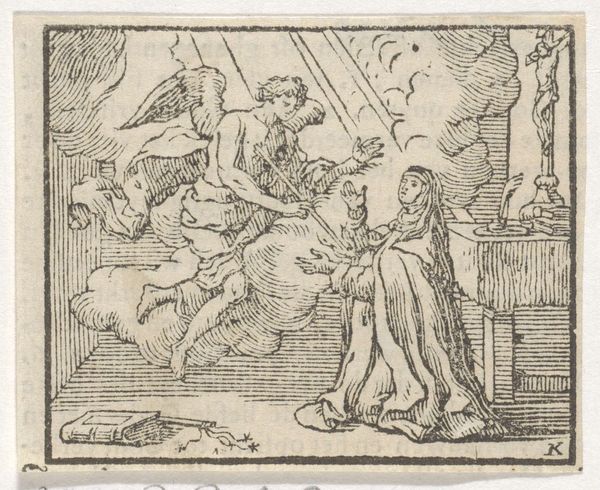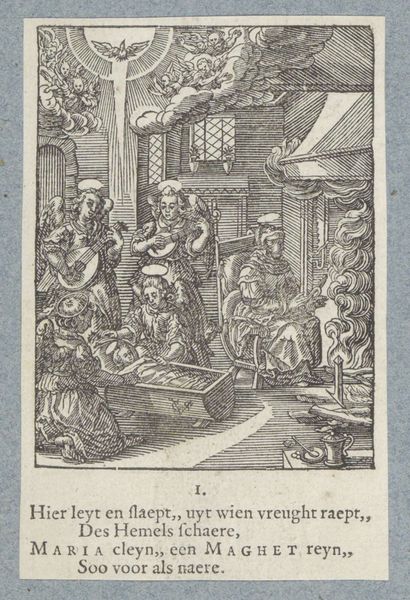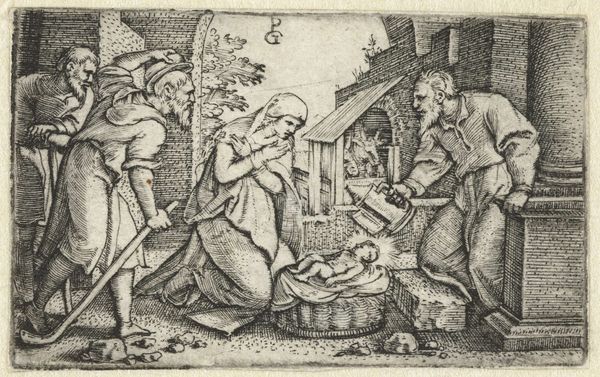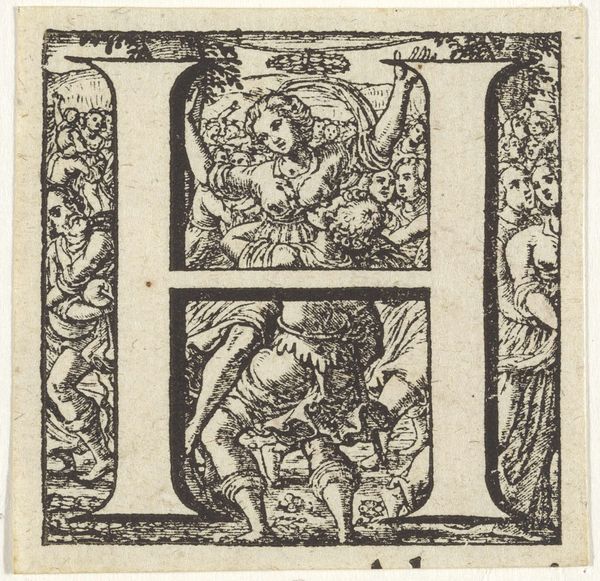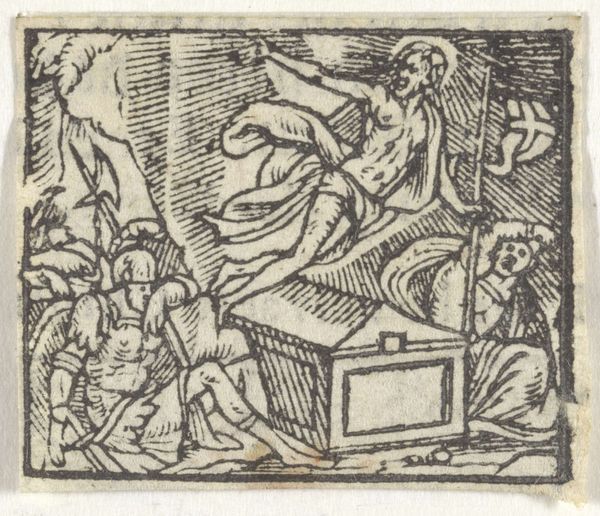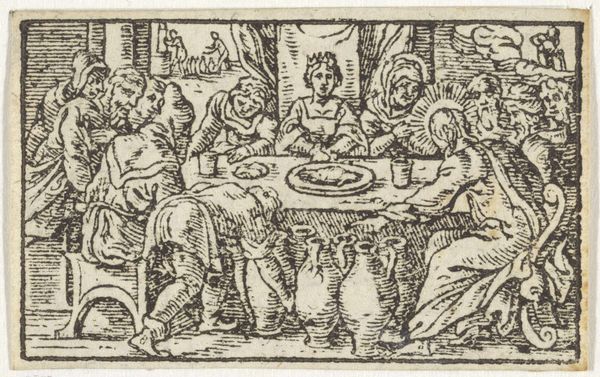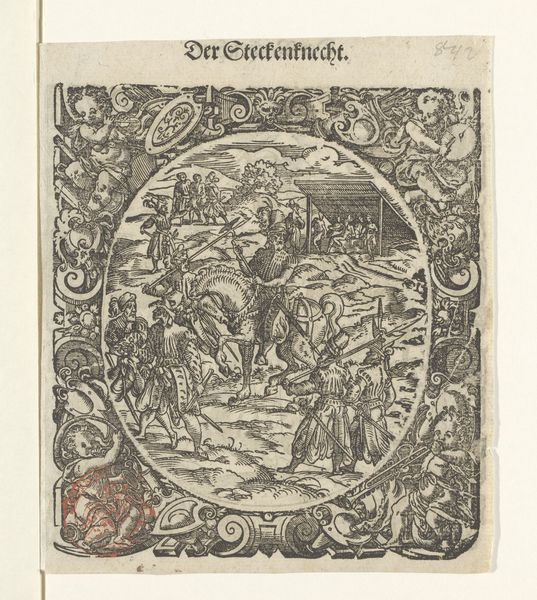
#
aged paper
#
hand drawn type
#
personal sketchbook
#
ink colored
#
sketchbook drawing
#
watercolour bleed
#
watercolour illustration
#
sketchbook art
#
marker colouring
#
watercolor
Dimensions: height 35 mm, width 102 mm
Copyright: Rijks Museum: Open Domain
This small woodcut print titled ‘December’ presents an image of winter from an unknown time and place. It likely comes from a calendar or book of hours. The print shows figures in a humble domestic setting, perhaps a peasant family preparing a pig for slaughter, butchering the meat, and rendering lard in a cauldron. Such images often served as allegories for the months in medieval and early modern calendars. This scene is both a representation of peasant life and a reminder of the agricultural labor that sustained society. It also has religious undertones. Wintertime could be associated with the themes of sacrifice and preparation for the coming year, the Christian season of Advent, which involves a period of fasting and spiritual preparation. As art historians, we might consult medieval agricultural manuals or religious texts to better understand the cultural associations that would have been attached to this kind of imagery. The meaning of art is always contingent on such social and institutional contexts.
Comments
No comments
Be the first to comment and join the conversation on the ultimate creative platform.

